Inside Trump's plan to save Appalachia: Mountains of plastic, rivers of radioactive waste and billions of Chinese dollars

ST. CLAIRSVILLE, Ohio — One thing you learn traveling through the Upper Midwest is that the various components of the oil and gas industries — the pipelines, the storage wells — often have gorgeously evocative names: Mountain Valley, Falcon, Plains, Atlantic Sunrise. These names are a kind of beautification project, like trees planted to obscure a municipal dump. A plant in Pennsboro, W.Va., called Clearwater treats fracking wastewater, which can remain radioactive even after treatment.
Skyhawk is the soaring name given to a smoothed-over patch of gravel at 67657 Clark Road in St. Clairsville, Ohio. On an overcast day last spring, it was nothing but an empty enclosure surrounded by heavy plastic fencing the height of a two-story building. Soon, the emptiness would be filled by wells that shoot high-pressure water and chemicals into the ground, forcing up reservoirs of natural gas and other valuable compounds. Skyhawk is a fracking pad.
The effects of hydraulic fracturing — as fracking is formally known — on human health are not yet fully known, but what is known so far is not terribly encouraging. The process seems especially damaging to expectant mothers, as well as to young children, with a 2017 study linking pollution from fracking wells to poor brain development. Asthma is another possible problem. So is cancer.

Only a few feet from Skyhawk’s edge stood another building, a low structure, with an outdoor area enclosed by chicken-wire fencing. Inside the fencing some plastic toys were visible. The building is home to Creative Learning Daycare and Preschool.
“That wall isn’t going to stop s***,” says Bev Reed, activist from the Concerned Ohio River Residents.
Fracking and its associated industries — some of which are potentially more hazardous to human health than fracking itself — have taken over Appalachia. A facility to handle fracking waste stands next to a school in Belmont, Ohio. A few miles away, on a ridge above town, a fracking well looms over an Amish homestead. Children play in its long, ominous shadow.
On Tuesday, President Trump will visit Monaca, Pa., to tout the next step in fracking’s takeover of West Virginia, eastern Ohio and western Pennsylvania. The president will be visiting a plastics plant now rising on the banks of the Ohio River. That plant, being built by Shell, is the most advanced facet of an even bigger project known as the Appalachian Storage Hub, or ASH. A “petrochemical supermarket,” as supporters call it, ASH will graft an entirely new industry — plastics — on a landscape already crowded with fracking pads like Skyhawk, not to mention a spreading spiderweb of pipelines and refineries.
To be an environmental activist in Appalachia has never been easy. Perhaps it has never been harder than in the age of Trump. “We’re surrounded,” concluded Reed, a taciturn woman in her 20s. She is a native of Bridgeport, a scrappy little settlement on the western bank of the Ohio River. There, she works at a bike shop that her father opened in 1973, during the oil crisis. The store, expertly curated, would not look out of place in some pristine San Francisco suburb. But you are not in California. On the hillside above Reed’s store, coal mine runoff trickling down the street was a disconcertingly bright orange, with streaks of equally disconcerting white.
Another activist, Ted Auch of the FracTracker Alliance, sent a drone whizzing into the air. Many cottage industries have thrived in Appalachia since fracking took hold here about a decade ago. One of them is prostitution. Another is the mapping of fracking infrastructure onto the landscape, which is typically done with drones because the enormity of the infrastructure is hard to otherwise grasp. The effort is noble but ultimately frustrating, like trying to track a runaway cancer in the final, deadly stages of metastasis.
The drone disappeared into the sky, returning a few minutes later with images of the fracking pad and, virtually right next to it, the preschool. From above, the two seemed even closer than they did from the ground.

People who are perturbed by the fracking revolution are routinely reminded that as late as 2011, when the housing crisis was over for much of the country, Belmont County was still struggling with nearly 12 percent unemployment. It is nearly half that now. Just down the road from the Skyhawk site is an oil and gas safety supply store. It is decorated with an American flag mural on which are superimposed two black derricks spewing oil.
“We support American gas & oil from American soil,” the mural reads.
The promise of ASH is tremendous: 100,000 jobs, supporters claim, along with brighter prospects for West Virginia, the poorest state in the nation, and its struggling neighbors, the counties of eastern Ohio and western Pennsylvania. In a clear sign of the project’s significance, the Chinese have agreed to invest $84 billion in West Virginia, a secretive arrangement that remains both tantalizing and unrealized.
Critics say that ASH is closer to Appalachia’s death knell than its savior, that it will devastate the region even more thoroughly than coal did in decades past. They argue that the promise of 100,000 jobs is wildly inflated, the product of an industry study meant to sell the government on the plan. And they say that in the rush to secure Chinese funding and start building, the Trump administration could be endangering the very people it has promised to save.
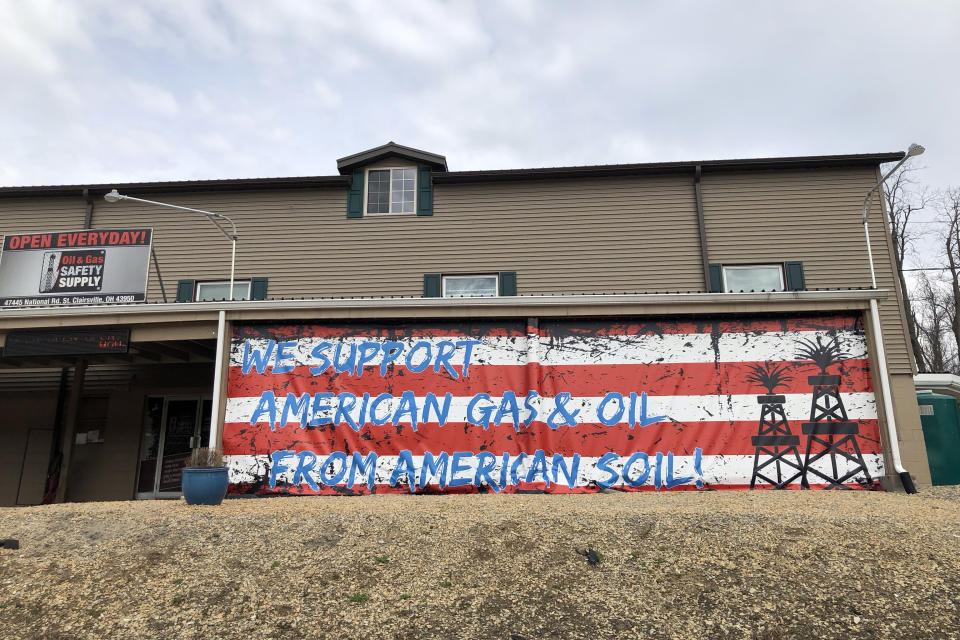
Another concern for critics of the plan is that it represents an investment in fossil fuels at a time when climate science says the country should be divesting from them. “The climate crisis is getting untenable,” says Varshini Prakash, a founder of the Sunrise Movement, a climate change advocacy group, and architect of the Green New Deal, an ambitious plan sponsored by Rep. Alexandria Ocasio-Cortez, D-N.Y.
Politicians from the region are divided. West Virginia Sen. Joe Manchin, a Democrat, thinks ASH is exactly what Appalachia needs. Ohio Sen. Sherrod Brown, also a Democrat, pointed to the “many questions about this project” in a circumspect statement to Yahoo News. “If President Trump wants to support Appalachia,” Brown said, “he should invest in rural broadband, good roads and the Appalachian Regional Commission, and stop threatening to take away Ohioans’ health care.” Yet he did not condemn ASH outright.
Not everyone is so ambiguous. One supporter of fracking and the associated petrochemical industry is Rep. Bill Johnson, a Republican who represents eastern Ohio. In a recent conversation at his Capitol Hill office, he imagined a scenario in which American “energy diplomacy” would see liquified natural gas used to exert pressure on adversaries like North Korea and Iran.
“Why not get into that market?” Johnson said of those two countries, and of Russia, all of which are currently under U.S. and international sanctions.
Trump recently boosted the project’s prospects with an executive order on “promoting energy infrastructure,” which he signed on April 10. The order gave the Department of Energy six months to produce a report “describing opportunities, through the Federal Government or otherwise, to promote economic growth of the Appalachian region, including growth of petrochemical and other industries.”
This was regarded by energy analysts as an effort to speed up the hub’s construction. As one such analyst told industry news site Kallanish Energy, the Department of Energy “has definitely been given its marching orders.” And those orders are to make ASH a reality soon, especially with Ohio and Pennsylvania among the most coveted prizes in the 2020 presidential election.
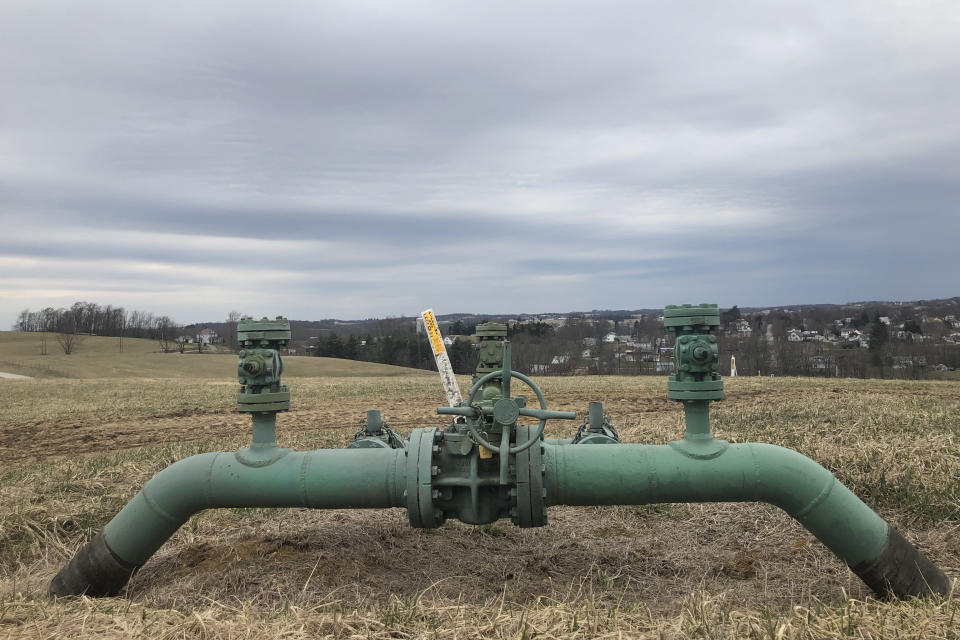
The scope of ASH is difficult to describe and just as difficult to understate. While a “storage hub” sounds like it might be something small and innocuous — a windowless warehouse, gleaming steel tanks — ASH is anything but. ASH will feed into six new “cracker” plants, immense factories that turn fracking byproducts called natural gas liquids (also called “wet gas,” and not to be confused with “dry” natural gas, fracking’s main product) into plastic pellets. Those pellets in turn become many of the plastic goods ubiquitous in Americans’ lives.
About 500 miles of pipeline would bring those natural gas liquids from the fracking fields of the Marcellus and Utica Shale plays to cracker plants like the one now rising in Monaca, the one Trump is slated to visit on Tuesday. Some of the liquids would be stored in facilities that could hold a total of 3 million barrels. The storage chambers will be adjacent to, or right under, the Ohio River, one of the largest waterways in the United States.
ASH will turn the Ohio River Valley into the epicenter of the American petrochemical industry, whose operations are closely tied to the well-established but still-expanding fracking sector. This is what Trump promised when he promised to save Appalachia, even if there are some in Appalachia who do not want to be saved, at least not on what will amount to an immense raft of cheap plastic.

St. Clairsville is in the very eastern part of Ohio, where West Virginia’s northern panhandle pushes like a wedge toward the Great Lakes, and where the hills and hollows of Appalachia start to smooth out into the plains of the Midwest. Donald Trump came here on June 28, 2016, when he had all but eliminated his competition to become the Republican nominee for president. He spoke on the campus of Ohio University Eastern, a few miles from the Skyhawk fracking pad. Near the campus sit the headquarters of the Murray Energy Corporation, an energy company whose founder, Bob Murray, was and remains a significant Trump supporter and adviser.

Hillary Clinton had committed one of her worst rhetorical mistakes of the campaign when she told CNN that she would put coal miners out of work (she intended to move them into the renewable-energy sector, but that context was quickly stripped away by Trump and some media outlets). Trump was going to do the opposite for these “amazing people,” as he called them. He described traveling through New England and the Midwest. “There’s no expansion,” he said. “We’re getting the hell beat out of us. And it’s gonna stop.”
Almost three years later, Trump seems to be making good on his promise to the people of the Ohio River Valley, as the unceasing construction in the region visibly suggests. ASH represents his most audacious and conspicuous bid to beat back what he calls “the war on coal” and keep fossil fuels at the center of the American economy.
ASH appears to have had its origins in 2015, not long before the Army Corps of Engineers division in Omaha, Neb., announced details of a plan to install a pipeline across the Missouri River in North Dakota, on the edge of the Sioux reservation of Standing Rock. That pipeline, Dakota Access, became the target of a prolonged protest that attracted international attention.
At the same time, a project of significantly greater scope than Dakota Access was taking shape in Appalachia, virtually without any public protest. By the time objections to ASH started to receive attention, several years later, it would be nearly too late.

In October of that year, officials from West Virginia, Ohio and Pennsylvania convened for the first Tri-State Shale Summit. Their goal was to “market the region to petrochemical and other industries that can use shale gas for manufacturing,” as a report from energy-related news site StateImpact Pennsylvania put it. The boosterism was truly bipartisan: among the speakers, by video, was Tom Wolf, the new Democratic governor of Pennsylvania. Appalachia, still reeling from the divestment of coal, would be the virgin soil for the petrochemical industry, which has historically been based along the Gulf of Mexico.
Industry took notice. Shell announced that it was building a cracker plant in Monaca in July 2016. The following month, a trade publication called Natural Gas Intelligence wondered, “Can a revived petrochemical industry in the Appalachian Basin actually compete with the more established juggernaut on the Gulf Coast? Will this spark development of a chemical and plastics hub?”
Nobody seemed to be working harder to make that happen than Brian J. Anderson, former director of the Energy Institute at West Virginia University and an endowed professor in plastics manufacturing. The latter position is funded by General Electric. According to reporting by Steve Horn of the DeSmog blog, an environmental news site, Anderson had also once worked for the Appalachian Development Group, the very same concern that now stands to potentially receive the $1.9 billion loan from the federal Department of Energy.
Anderson provided the scientific justification for the project, even as he appeared to stand to potentially benefit from the project’s realization (Anderson refused repeated requests to comment for this article). In a 2017 presentation, he argued that Appalachia could renew its economic prospects by focusing on the liquids that are the byproducts of fracking. These were the feedstock of the plastics industry, and they were being shipped to the Gulf Coast, a costly and inefficient enterprise. Anderson argued that the fracking byproducts should stay in Appalachia.
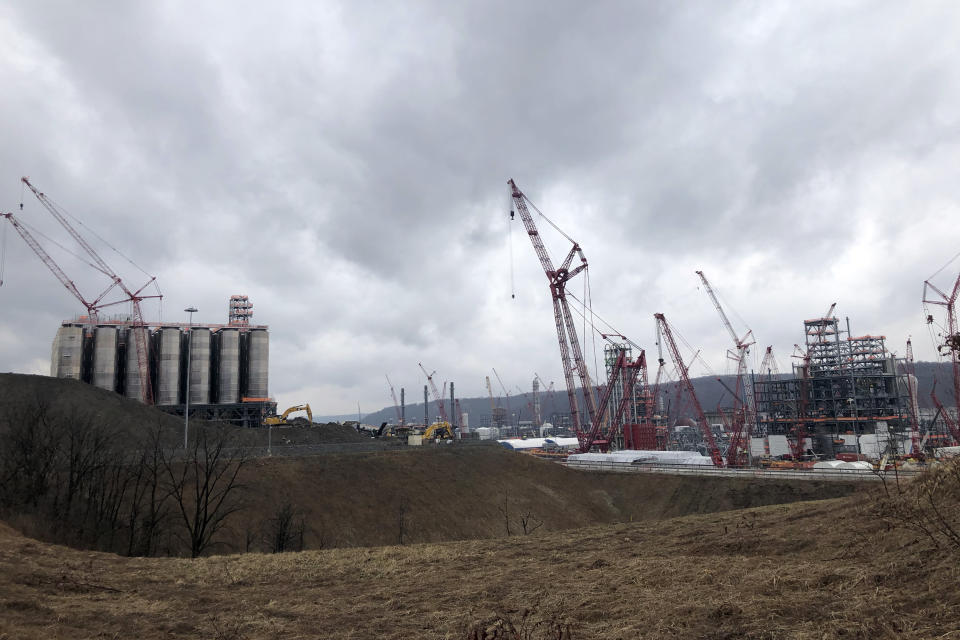
Some of the figures Anderson used in the 2017 presentation came from the American Chemistry Council, a lobbying group for the petrochemical industry that has had several strong links to the Trump administration. That same year, the council published a report that claimed, in what would prove its most widely publicized conclusion, that ASH would add 100,000 permanent jobs in the region. It would also “maximize America’s domestic energy and manufacturing potential,” according to a press release from the council.
The promise of 100,000 jobs — repeated by Anderson and many in the Trump administration — has been central to the argument for ASH and is used to override concerns about human and environmental health. Cancer may be a possibility, but poverty is real. And how else was Appalachia going to climb out of its long slide into destitution? That is the argument you frequently hear.
The seemingly impressive employment number comes from IMPLAN, an algorithmic tool that allows users to calculate the economic impact of a potential project. IMPLAN models are often deployed by supporters of new sports arenas and other developments that need to be sold to a potentially skeptical taxpaying public. The promise of jobs always does the trick.
And yet, critics like Stanford economist Roger Noll argue that the sports arenas and entertainment complexes never seem to create many jobs beyond construction and, once those inevitably wind down, low-wage service work of the kind already available elsewhere.

IMPLAN and similar models use simplified input-output tables that radically distort the benefit of every dollar spent, according to a critique of economic impact models by the John Locke Foundation. The model, this critique argues, ignores the very real possibility — the opportunity cost — of that very same dollar being better spent in some other, potentially more publicly beneficial fashion.The model by design exaggerates the benefits of a projects while minimizing the benefit of doing something else — or even nothing at all.
The author of that analysis, Locke Foundation senior economist Roy Cordato, says IMPLAN is an inherently “political model,” one that is “biased” in favor of job creation. “Everyone knows it’s good for special interests,” he said. “It misses very fundamental questions of economics.”
In other words, IMPLAN is inherently sunny, which is why it is beloved by developers. It always give them the answer they want.
Another critic, sports economist Donald A. Coffin, has called IMPLAN models “wildly unreasonable” because of the “multiplier effects” they predict as huge, inevitable benefits, not the incremental gains they usually turn out to be. Coffin has called IMPLAN “a ‘model’ designed to generate large impact numbers to please a client who wants to lobby someone.” The American Chemistry Council was precisely such a lobby. The “someone” it sought to influence included public officials all over Appalachia, as well as the Trump administration.
In an interview, American Chemistry Council economist Martha Moore said she wasn’t sure how the much-touted 100,000 figure came to be, since she was relying on the model’s algorithms. “I just used what IMPLAN provided,” Moore said, explaining that the program has a “huge back end” that does much of the work.
Even a cursory knowledge of how the petrochemical industry works makes clear how the 100,000 figure simply doesn’t hold. A fully operational cracker plant doesn’t employ more than 600 or so people, at least according to what has been reported about the Shell facility in Monaca. As for pipelines and storage caverns, they will need minimal human staffing once fully built. That means that, at the very most, ASH would create around 4,000 jobs, just a little more than two Amazon warehouses recently opened in Ohio.
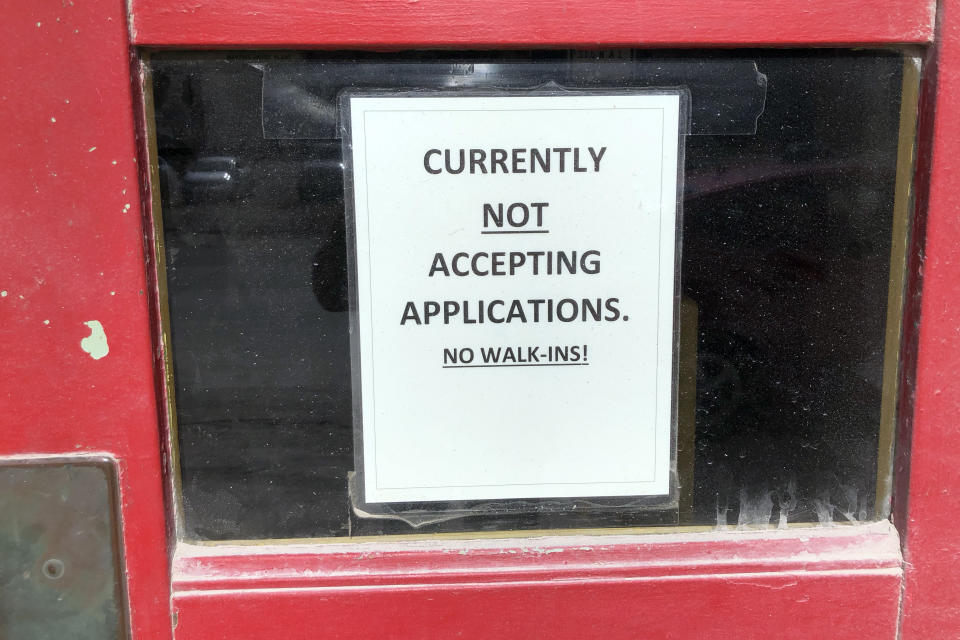
Of course, to claim 100,000 jobs is immensely tantalizing. And if the figure isn’t credible, it at least has the veneer of credibility, which in the age of “alternative facts” is more than enough. The claim is also politically expedient. The president is widely beloved in West Virginia, but he will need to win the more difficult states of Ohio and Pennsylvania in 2020 to remain in the White House for four more years. ASH has proven a potent means of steering money to those states.
In the summer of 2017, Trump traveled to China, where he signed an $84 billion memorandum of understanding, or MOU, with the Chinese focused on the Appalachian Storage Hub. The MOU would “extend over a 20-year period, covering projects for power generation, chemical manufacturing and the underground storage of liquefied natural gas,” according to a Reuters report based on a West Virginia Department of Commerce statement.
The nature of the understanding spelled out in the memorandum is unclear, because the administration has not made that memorandum public. As the president continues with his anti-China trade campaign, there have been suggestions that the deal might be off. It seems to be on for now, part of $250 billion in arrangements Trump has made with China, even as he has decried that nation’s increasing economic influence.
There are other sources of funds, of course. The Department of Energy announced it was considering $1.9 billion in loan guarantees for ASH. The money came from Title XVII, an Obama-era program that was intended for clean energy projects. Rick Perry, Trump’s energy secretary, has refashioned it to bolster an “all-of-the-above energy portfolio,” code for supporting fossil fuels.
Rep. Ilhan Omar, D-Minn., meanwhile, has moved to stop that loan, which has not been definitely approved. Her amendment recently passed the House, but is unlikely to pass in a GOP-controlled Senate.

But while the Chinese investment — which extends to projects beyond ASH — isn’t necessary, it is highly coveted, and officials in West Virginia are getting impatient for the promised billions to finally arrive. Jim Justice, the Republican governor of West Virginia, and a close Trump ally, said in January that ASH is his “No. 1 economic focus.” Since then, the project’s critics have only grown louder, attracting critical scrutiny from outlets like ProPublica and CNBC.
In testimony before Congress earlier this spring, Perry complained about the pace with which ASH was coming together. “It’s not happening as fast as I’d like to see it,” the energy secretary admitted.
The executive order Trump signed this spring was supposed to put the project into overdrive. The report from the Department of Energy — which will almost certainly conclude that the project is feasible, considering the department has been open to making loan guarantees toward its completion — will arrive near the end of 2019, as Trump’s reelection campaign begins in earnest.
Still, the sense that things are taking too long remains. At a Senate hearing in July, Manchin of West Virginia said that ASH could augur a “renaissance in the chemical industry” — if only it were ever built. He asked one of the witnesses, a Department of Energy official, for “any type of an update.” He looked and sounded anxious.
That official, Shawn Bennett, is a former fossil fuel lobbyist. He is now the deputy assistant for oil and natural gas at the Department of Energy. Bennett assured Manchin that he was “hard at work” on Trump’s executive order, promising a report in August. When Manchin complained about Chinese influence on the project, Bennett wisely ignored it.
But even as officials in Ohio, Pennsylvania and West Virginia — as well as in Washington, D.C.— push for final approval of the sprawling project’s constituent parts, critics think they can halt ASH. Their central argument is that Trump’s bid to save Appalachia will only hasten its demise.

To see the future of the Ohio River Valley, it is useful to travel down another river: the Mississippi, in particular where it winds and wends between Baton Rouge, La., and New Orleans before emptying into the Gulf Coast. This is sometimes called the nation’s “petrochemical corridor” for its impressively dense concentration of oil refineries and chemical plants. Environmentalists, and some locals, have a different name for the place: Cancer Alley.

Approaching New Orleans, vast contraptions of steel rise on either side of the road. Chimneys spew smoke; trucks raise dust. There is evidence of immense activity, but few people visible. Small towns sit squeezed between the plants: Willow Glen, White Castle. These are so-called fenceline communities, which like their counterparts in West Virginia directly experience the pollution wealthier people have the privilege of avoiding.
In a disconcerting juxtaposition, old plantation manors stud the industrial landscape, faded vestiges of a past that refuses to fade away. They have been superseded by factories, which like the plantations, are corporate enterprises where brutal toil benefits the few.
Yet supporters of the plans for Appalachia, like Mark W. Menezes, an undersecretary at the Department of Energy, point to this region as a model. “When you talk to people down there, they’re so appreciate of the high-paying jobs,” he said of the Gulf region. “They revitalize whole communities.”
Environmental activists call such revitalization efforts bribes, and dangerous ones at that. As an example, they took me to a warehouse in Martins Ferry, Ohio, that stored and processed radioactive fracking waste. Almost right next door was a new field for the local high school football team.
“Their quality of life has never been higher,” Menezes said of Louisiana. The state ranks No. 42 in quality of life, at least according to one survey. That’s not exactly spectacular, but Pennsylvania and West Virginia are both even lower. Menezes would like to change that. “It just makes perfect sense to develop it there,” he says of ASH.
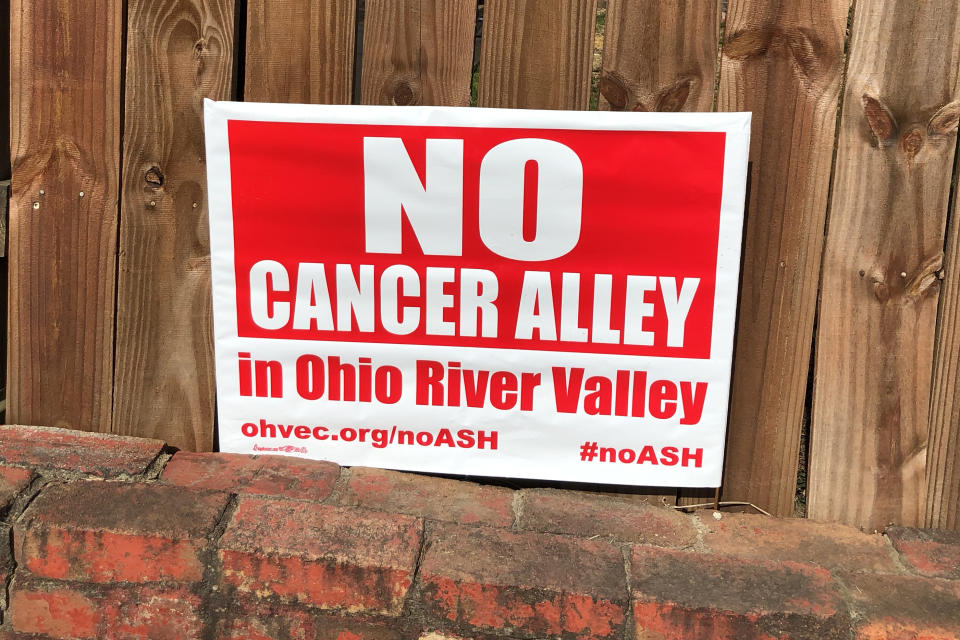
True to its name, Cancer Alley has some of the worst health outcomes in the United States. Last year, a study of the Louisiana Tumor Registry found significantly elevated cancer rates along various parts of Cancer Alley. People who live there have suspected as much for years, but cancer clusters are notoriously difficult to prove (people move, as do toxins, which muddles the lines of causation). Each plant seems to bring its own potential ill: the carcinogen glyphosate from a Monsanto plant in St. Charles Parish, the carcinogen chloroprene from a Denka plant in St. John the Baptist Parish.
However dire the public health crisis is here, it is overshadowed by the one in Appalachia. Even as cancer rates across the rest of the nation are falling, they are rising in rural Appalachia, according to a 2016 research paper by University of Virginia epidemiologists. The reasons for this are many, and they are complex. Poverty is foremost among them. But industry also has its role.
Aaron Yao, one of the scientists responsible for the 2016 paper, said he did not blame industry for the elevated cancer risks, but he also refused to exculpate it. Asked if he would live in Appalachia, the cancer scholar answered frankly: “I would say no.”
Cancer Valley is what activists have already begun calling the Ohio River Valley, where, ironically enough, American winemaking got its start in the early 19th century. There are still a few wineries in the hills above the river, but they are far outnumbered by fracking pads. Even without the full Appalachian Storage Hub, oil and gas have taken over the landscape. Pipelines look like enormous pythons as they run up and down the hills that have been stripped of vegetation.

Jill Antares Hunkler, a local activist who has been fighting ASH, remembered when, several years ago, her sister saw a Halliburton truck rolling through Barnesville, Ohio. She promptly began to cry. “You know you’re in trouble when you see Halliburton trucks in your tiny little town,” Hunkler explained.
Hunkler, who is partly Native American, grew up in southeastern Ohio. In a reflective essay she shared with me, she calls herself “a fracking refugee. My home at the headwaters of the historically pristine Captina Creek watershed is now surrounded by oil and gas wells — 78 within a five-mile radius,” Hunkler writes.
“I never imagined my quiet, country, healthy way of life would disappear.”

If the Gulf Coast already has a petrochemical empire, why build another in the Ohio River Valley? Supporters dance around this issue, but the logic can be teased out of a 2018 report by the Department of Energy, which argued for the necessity of building ASH. The report cites the need for “geographic diversity of petrochemical supply, which would be able to supply markets in case of supply interruptions in other regions.” A little later, the same report references “disruptions caused by hurricanes.”
In other words, the petrochemical industry is worried about climate change, which makes storms more frequent, more ferocious and less predictable. Rep. Johnson, the eastern Ohio congressman, was blunt about this. “Imagine what would happen if a hurricane — like a Hurricane Michael, a Category 5 — were to come through there and take our refining, importing-exporting, processing capability,” Johnson said. “It can have devastating effects on America’s economy.”
But there is some evidence that Appalachia could prove unsuitable for a project of this scope and size. It is relatively easy to lay pipeline across the flatlands of Texas and Oklahoma, much harder to do so across the hills and valleys of Appalachia, where the ground is less stable. That instability combined with the combustibility of what flows through those pipes can be a dangerous combination.

Last September, Chuck Belczyk woke up to an enormous explosion somewhere outside his hilltop house on Ivy Lane in Center Township, Pa., outside of Pittsburgh. An orange fireball blossomed in his backyard. Belczyk, who works in aviation, thought a jet had crashed. But this was another type of accident: the explosion of the Revolution pipeline behind the Belczyks’ house.
“The fire shot up 150 feet in the air, damaged power lines, and sent neighbors scrambling out of their homes,” a report said at the time. Twenty-five homes had to be evacuated. Many months later, the hilltop remains scorched, the scar on the land visible from far away.
To keep the land under the pipelines from eroding, pipeline companies have been dusting the ground with pellets of EarthGuard, which is meant to stabilize soil. However, the pellets also contain acrylamide, a known human carcinogen.
It is not clear that storing natural gas liquids under the Ohio River is a good idea, either. The Ohio is already known as the nation’s dirtiest river, even as it provides drinking water to some 5 million people in the area, including to the residents of Cincinnati. The natural gas liquids would be stored in salt caverns along the river’s banks. The method, which is not new, is not quite as foolproof as supporters claim. Seven years ago, a salt cavern collapsed in Bayou Corne, La., opening up a massive sinkhole that has effectively swallowed up the town. It was quickly discovered that 12 other salt caverns across Louisiana also had walls that were in danger of collapse.
Nobody wants cancer clusters and sinkholes; neither, however, do local communities want unemployment and rampant opioid addiction. But there are real questions about whether the Appalachian Storage Hub can fulfill the promises Trump and others have made to people in Ohio, West Virginia and Pennsylvania.
For one, a petrochemical industry in Appalachia only makes sense if the fracking industry remains as robust as it has been. It may, especially if it continues to receive support from a Republican Party eager to maintain a hold on the Upper Midwest. The irony of Trump’s “energy independence” stance is that it makes the United States ever more dependent on fossil fuels.
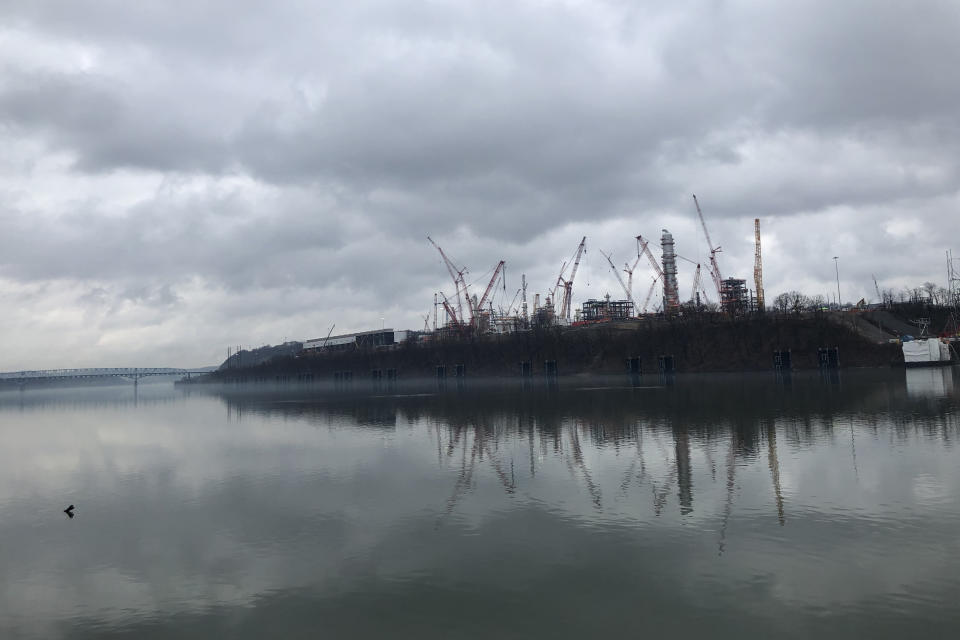
Another irony is that, much as Trump derided “hedge fund guys” during his presidential campaign for making money without adding value, the fracking industry has been propped up by financial speculators. Last year, an analysis for the Financial Times described fracking as “a debt-fuelled pursuit of growth at any price,” which sounded rather like a description of the U.S. housing market right before it collapsed in 2007 and ’08.
And then there’s the plastics industry. Supporters of ASH and its associated project talk about petrochemicals, generally downplaying that the end product of their efforts will be more plastic, whose use is facing increasing opposition. According to Carroll Muffett of the Center for International Environmental Law, plastics will account for 56 gigatons of carbon emissions in the next 30 years. “The plastics crisis is a climate crisis hiding in plain sight,” he recently told NPR.
That view is becoming consensus. One hundred twenty-seven countries have moved to regulate single-use plastic of the kind that would be churned out of Appalachia. Even Russia, where environmental regulation is infamously nonexistent, is considering banning plastic bags, while across the United States, plastic straws are becoming the new cigarettes a movement against plastics is building.
Johnson, the congressional representative from eastern Ohio, dismissed these concerns, estimating that support for ASH in his district runs as high as 90 percent, if not higher. He dismissed those who don’t support the project as agitators from somewhere else. “In many, many cases, when protesters show up, they’re not from our state, they’re not from our communities,” he said.

Dustin White’s family has been in West Virginia for 11 generations. On his mother’s side, he is a descendant of John Cooke, who fought in the Revolutionary War and later became, with his wife, Nellie, the first European settler in what would come to be Wyoming County, in the southwestern part of West Virginia.
“I grew up with a family of coal miners,” White said. “Most of the men in my direct family line have, at some point, worked in the industry.” He estimates that that has been the case for the last five or six generations. And it was a tradition that ended with him.
White’s father gave his life to the Eastern Associated Coal mine. Coal broke his father, even as it sustained his family. “If it didn’t make you sick, it would cripple you,” White says. His father died at 65 from bladder cancer, a common affliction for those who work in the coal industry. White had promised his father that he would graduate from college, which he did. But he did not want to leave West Virginia, returning home after finishing school. He became an activist only after a coal mining company tried to remove an ancestral cemetery on Cooke Mountain (the clash of funereal and corporate concerns is common in West Virginia).
During the fight to save the cemetery — which was successful — White and his mother took a helicopter trip over West Virginia’s coal country. The mountaintop mines looked like “big cancer clusters on the land,” White recalls. Looking momentarily away from the scene, he saw that his mother, sitting next to him, was crying. “I can no longer support this industry,” he concluded. “I’ve got to fight it.”

In March, White and another Ohio Valley Environmental Coalition activist, Alex Cole, attending a meeting in New Martinsville, W.Va. On the agenda was an air quality permit for a chemical plant in nearby Natrium. Although the plant did not technically belong to the Appalachian Storage Hub, it was part of the broader petrochemical family the activists want to expel.
White had posted about the meeting on Facebook and hoped for a strong showing from activists. But when they showed up in the New Martinsville municipal chambers where the meeting was to be held, the room was virtually empty. A handful of public officials sat facing rows of unoccupied chairs. A projector was propped up on a board game.
Joe Kessler, a state air quality engineer, went through his presentation. The corporation had filed all the necessary paperwork. That paperwork had been vetted by the state. The whole thing was a done deal, and there was nothing he could do. Kessler spoke efficiently and without emotion. Perhaps everyone could still make it home in time for dinner.
There was time for public comment. “Please do not approve this permit,” White said. Cole also spoke, concluding his remarks with a disgusted wave of the hand at the public officials. An older man, a local gadfly, then stood and began to rail against in what seemed like a hopeful development for the activists. But his argument was with a seemingly minor procedural matter of the hearing — he thought the hearing had strayed from its published agenda — not with the content itself. The public officials were used to this. They let the graying objector have his say, and the matter was concluded. The project would move forward.
“I was really hoping we’d have more folks here,” White said after the meeting adjourned. “I’m very disappointed.” At the same time, he did not fault people for not wanting to spend a spring evening listening about air quality permits. He understood why, when some people heard about the Appalachian Storage Hub, they wondered what the big deal was. Some people thought cracker plants made Saltines.
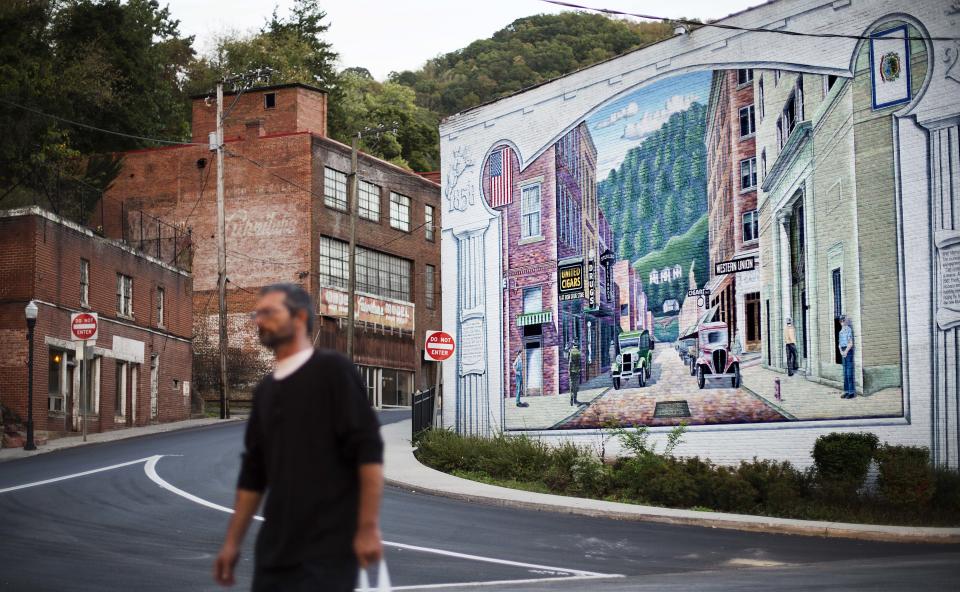
Later, at an outdoor bar, the two vented, as one does over beer. The beer was local, artisanal. The bar that purveyed those beers would not have been out of place in Brooklyn or any other place where young people with money congregate, but it seemed out of place here, in West Virginia, which is only one of two states that have seen a total population decline in the last decade. The other is Michigan. These states represent the 20th century economy, the economy that built the middle class but then steadily sputtered out. Trump won both.
West Virginia has increasingly marketed itself as a tourist destination. Driving there, you could see why. You could see how, in another world, West Virginia would have a Napa and Sonoma of its own, while Northern California would have coal mines and petrochemical refineries.
West Virginia was just recovering from coal and here was another industry, arriving from out of state, coming with promises, and leaving the mess for future generations to clean up. There was disgust in Cole’s voice as he spoke about the storage hub, and also resignation.
“What a stupid place to put this thing,” he said.
_____
This article has been updated to more accurately reflect Rep. Johnson’s comments on energy diplomacy.
Download the Yahoo News app to customize your experience.
Read more from Yahoo News:
FBI document warns conspiracy theories are a new domestic terrorism threat
Marianne Williamson on reparations and her emails with Oprah
'It's blasted across America': How Fox and Sean Hannity amplified a Russia-fueled conspiracy
Democrats resume search for a 'smoking gun' to bring down Trump
PHOTOS: President faces protests on visit to cities hit by mass shootings



